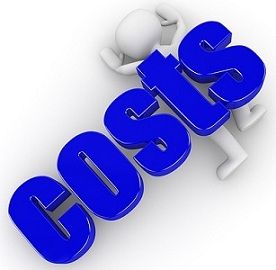 The identification, measurement, and allocation of costs can help to determine the actual profit of the organization. Based on the relationship or degree of traceability to products, the costs are classified into direct costs and indirect costs. The two cost differ in the sense that expenditure which can be identified and allocated to a particular cost object or cost center, i.e. traceable to a particular product in an economically feasible manner, it is termed as a direct cost.
The identification, measurement, and allocation of costs can help to determine the actual profit of the organization. Based on the relationship or degree of traceability to products, the costs are classified into direct costs and indirect costs. The two cost differ in the sense that expenditure which can be identified and allocated to a particular cost object or cost center, i.e. traceable to a particular product in an economically feasible manner, it is termed as a direct cost.
On the other hand, all the costs which are not tied to a particular cost center or cost object, i.e. it is difficult to trace the cost to a single product, so such cost is called indirect cost. When one is working on costs, he/she should have a thorough knowledge of the difference between direct cost and indirect cost. Check out this article to have a clear understanding on the two.
Content: Direct Cost Vs Indirect Cost
Comparison Chart
| Basis for Comparison | Direct Cost | Indirect Cost |
|---|---|---|
| Meaning | A cost that is easily attributable to a cost object is known as Direct Cost. | Indirect Cost is defined as the cost that cannot be allocated to a particular cost object. |
| Benefits | Specific projects | Multiple projects |
| Aggregate | When all the direct costs are taken together they are known as prime costs. | Total of all the indirect costs is called as overheads or oncost. |
| Traceable | Yes | No |
| Classification | Direct material, direct labor, direct expenses | Indirect material, indirect labor, indirect overheads |
Definition of Direct Cost
The cost that can be directly attributable to/identified with/ associated with the specific cost center or cost object like a product, function, activity, project and so on is known as Direct Cost. Based on elements, the direct costs are classified into the following parts:
- Direct Material: The cost of material that can be allocable to production.
Example: Raw material consumed during production of the unit. - Direct Labor: Wages to the laborers that can be identified with a cost object.
Example: The term wages include bonus, gratuity, provident fund, perquisites, incentives, etc. - Direct Expenses: It includes all the other expenses that are directly linked to the production of a product.
Example: Job processing charges, hire charges for tools and equipment, subcontracting expenses.
When all these three costs are taken together, they are known as Prime Cost
Definition of Indirect Cost
Indirect cost is those costs that cannot be directly assigned to/related to/identified with a particular cost center or cost object, but they benefit multiple cost objects. It is not possible to calculate them for a single cost object. However, it needs to be apportioned over various products as well as among the different departments of the organization. It includes production, office & administration, selling & distribution costs. The indirect cost is divided into the following categories:
- Indirect Material: Material Cost which cannot be identified with a particular product or project.
Example: Lubricants - Indirect Labor: Salary to the employees that cannot be allocable to a particular cost object.
Example: Salary to the management team and employees of the accounts department. - Indirect Expenses: All the expenses other than indirect material and labor are included in this category.
Example: Interest, Rent, Tax, Duty, etc.
Key Differences Between Direct Cost and Indirect Cost
The basic differences between direct cost and indirect cost are given as under:
- The cost which is easily apportioned to a particular cost object is known as Direct Cost. Indirect Cost is the cost that can’t be charged to a particular cost object.
- Direct Cost benefits the single product or project. Conversely, Indirect Cost benefits multiple product or projects.
- The total of all the direct cost results in prime cost whereas the result of all the indirect cost is known as overheads.
- Direct Cost is traceable while Indirect Cost is not.
- Direct cost is subdivided into the direct material, direct labor, direct expenses. On the other hand, indirect cost is subdivided into production overheads, administration overheads, selling & distribution overheads.
Conclusion
Both direct cost and indirect cost can either be fixed or variable. In short, we can say that direct costs are those which are used in the production of a single unit of a product, but indirect costs occur in the ordinary course of business and they benefit the entire organization, not to a single product or project. So, in this way these two costs differ.






Cassandra Sunthgolam says
Excellent!
Demeke says
thank you very much.
Moromokejimi says
In fact, there is stress-free in every work on this site. Excellent.
Minnes mwambila says
This journal has really helped me to clearly understand the difference between direct and indirect costs